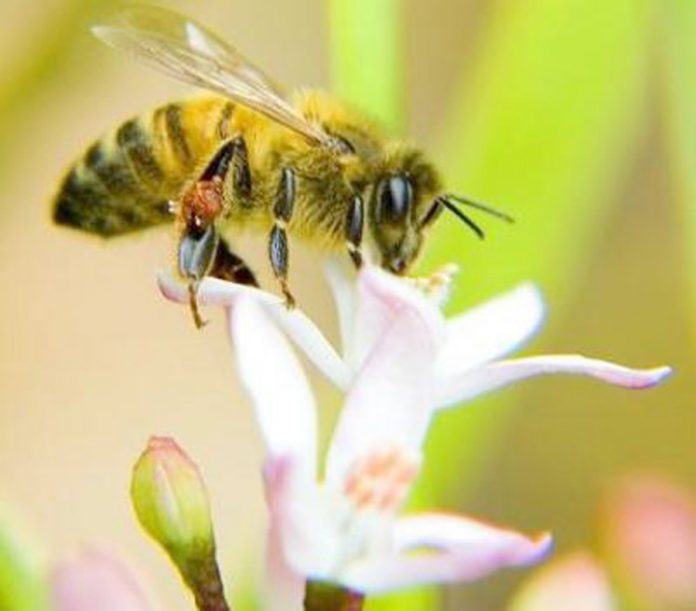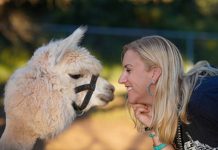By Joe Naiman
For The Alpine Sun
The Environmental Impact Report for the county’s proposed tiered beekeeping ordinance was released for public review April 1.
The 30-day public review period will allow comments through May 2. All comments will be reviewed and responses provided before the ordinance is considered for adoption.
By Joe Naiman
For The Alpine Sun
The Environmental Impact Report for the county’s proposed tiered beekeeping ordinance was released for public review April 1.
The 30-day public review period will allow comments through May 2. All comments will be reviewed and responses provided before the ordinance is considered for adoption.
The county’s existing ordinance requires beekeepers to maintain their hives at least 100 feet from a public access road and at least 600 feet from any dwelling which doesn’t belong to the hive property owner.
The San Diego Beekeeping Society had approached County Supervisor Dianne Jacob with a request to relax the ordinance in order to promote the industry and preserve the county’s honey bee population. In addition to allowing non-commercial beekeeping on smaller lots, a setback reduction may allow produce or flower crop farmers who do not necessarily wish to engage in honey extraction or beeswax sales to have hives on their farmland and could also allow hives closer to produce and flowers on non-hive farms. In October 2013 the San Diego County Board of Supervisors directed the county’s Chief Administrative Officer to work with the San Diego Beekeeping Society and any other interested parties to investigate options which would protect and promote beekeeping operations throughout unincorporated San Diego County and to report back to the board within 120 days.
The stakeholders included community planning groups, registered beekeepers, pest control operators, and the San Diego County Farm Bureau as well as the San Diego Beekeeping Society.
The county supervisors previously responded to regulatory relief requests from small winery owners and small equestrian operations by developing tiered ordinances, and in May 2014 the Board of Supervisors voted 5-0 to give county staff direction to focus on a tiered ordinance and to work with stakeholders. The ordinance will include the development of an online best management practices course. A 5-0 Board of Supervisors vote in June 2014 directed county staff to return to the board with multiple draft tiered ordinances within four to six months. That action also received a report from county staff on an inventory of county properties which could be used for beekeeping under current setback requirements and a report on other jurisdictions’ beekeeping regulations, directed county staff to add legislation encouraging beekeeping on state lands to the county’s legislative program, directed staff to draft a letter expressing support for an active State Assembly bill which would encourage apiculture on lands managed by the California Department of Fish and Wildlife, and directed staff to investigate additional county properties for possible apiculture. In August 2014 the county’s Department of Agriculture Weights and Measures (AWM) began a community outreach effort with presentations by county entomologists to community planning and sponsor groups.
On October 29 the Board of Supervisors voted 5-0 to approve a preferred tiered ordinance for the review process. The first tier is intended for hobbyists and has a limit of two hives, although the practice of splitting hives prevents swarming and up to five hives would be allowed on a 30-day temporary basis.
The first tier would require at least a 25-foot distance from the property line and from roadways, a 35-foot distance from any neighboring dwelling, and a 150-foot distance from sensitive sites such as schools, hospitals, child day care and elder care centers, parks, playgrounds, stables, and kennels. A property of approximately 6,000 square feet could have beekeeping if the property configuration allows for distance requirements to be met.
The second tier anticipates small commercial beekeeping operations. Properties with no more than 20 hives would have a required setback of 50 feet from roadways and property lines and 100 feet from neighboring dwellings.
Properties with three to ten hives would have a setback requirement of 150 feet from sensitive sites, while the sensitive site setback for 11 to 20 hives would be 300 feet. Depending on the property configuration, a property of one acre would allow for beekeeping.
The third tier would accommodate large commercial beekeeping operations and does not limit the number of hives. Such operations would have a minimum setback of 50 feet from a roadway, and while there is no minimum distance from a property line the distance from a neighboring dwelling must be at least 350 feet and the setback from sensitive sites must be at least 400 feet.
Residents or site workers with a documented allergy to bee stings may request that their property be designated as a sensitive site, and the distance requirements may be waived if the hive property borders open space or if the neighbors provide written permission for hives to be closer than the minimum distances.
After the ordinance is adopted, AWM will report back to the Board of Supervisors within 24 months to provide an update on the implementation of the program. That two-year timeframe will allow AWM to collect data on the implementation and determine if any adjustments are needed.













